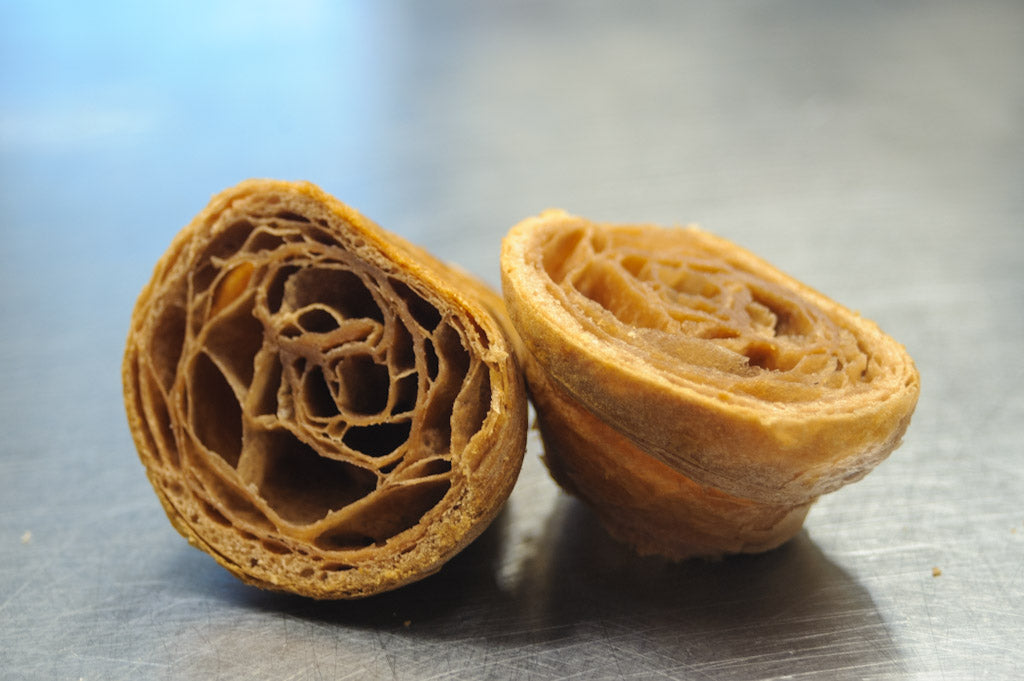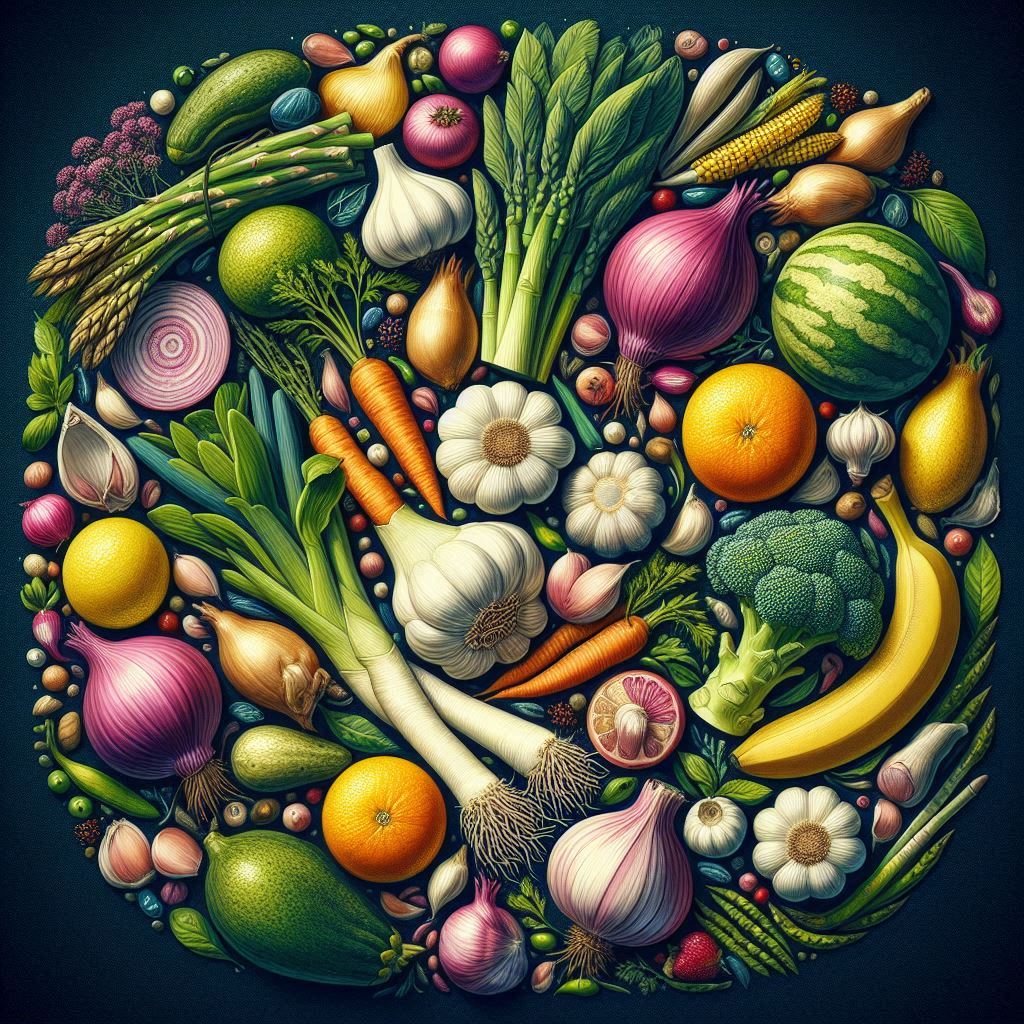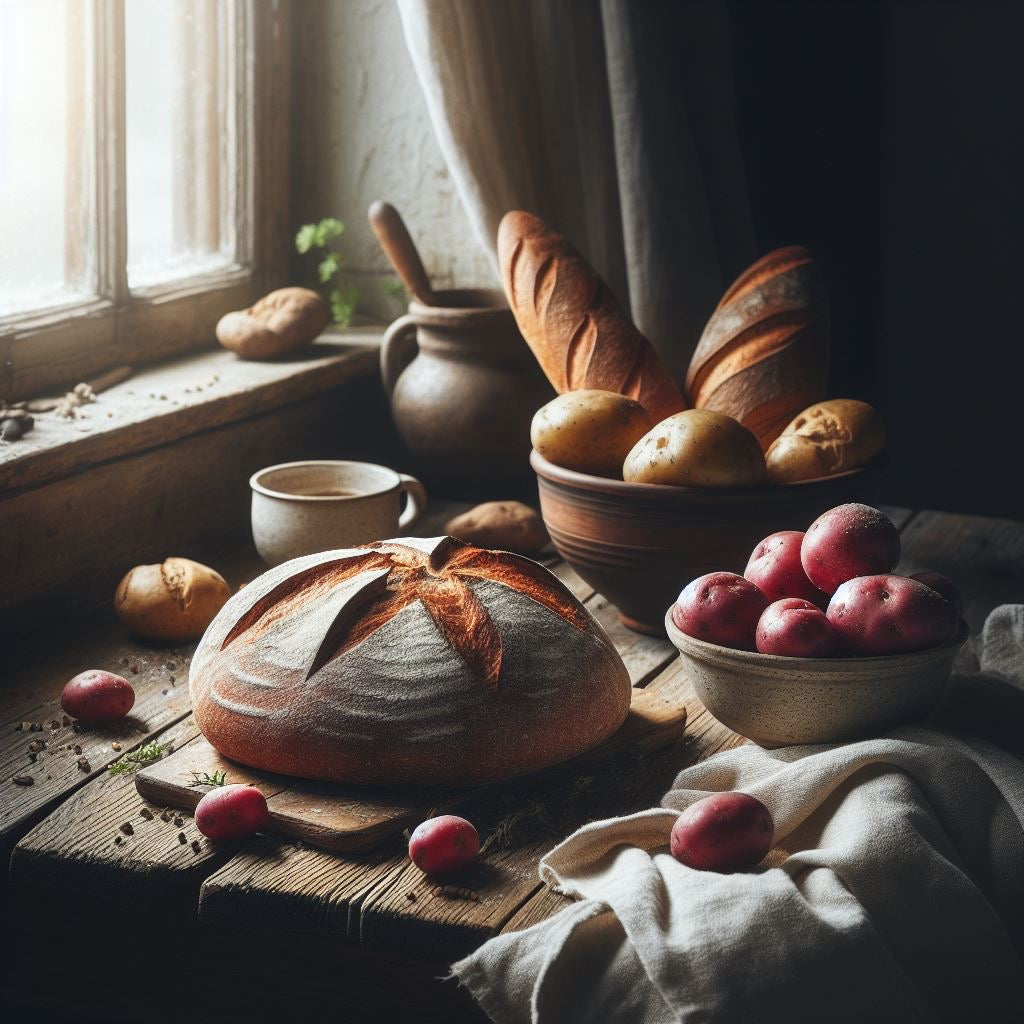Proportion for 12 pieces
Ingredients:
DUST:
- 310g Cornstarch
- 30g Potato starch
- 20g Very fine rice flour
- 60g Granulated sugar
- 10g Bitter cocoa powder
- 60g Angel Mix
- 5g Fine salt
- 25g Fresh yeast
LIQUIDS:
- 290g Cold water
- 20g Sunflower oil
- Flavor to taste (vanilla, citrus, etc.)
FOR LAMINATING:
- 180g Puff Pastry Margarine
Procedure:
Gather all the "Powders" in the mixer bowl and start it at low speed with the hook.
Pour in the "Liquids" and continue to work for about ten minutes, switching to medium-high speed and cleaning, from time to time and with the machine stopped, the sides of the bowl, using a spatula and bringing the mixture back to the centre.
In the meantime, form a rectangle with the margarine, bringing it to a thickness of about 1cm. It doesn't need to be an extremely precise rectangle, the thickness just needs to be uniform. If you use NON-professional margarine or the room temperature is particularly high, it may help to leave the margarine in the freezer for 3/4 minutes.

Transfer the dough to the table, and using the rice starch as a dusting, create a long, narrow rectangle, enough to insert the "block" of margarine and cover it. It is the classic system for incorporating the fat part into a dough for puff pastry or croissants.
Give two simple turns (called da tre) at a thickness of 7/8mm, without taking breaks between one turn and the next and trying not to use too much rice starch as dusting, and in this case be careful to brush off the excess. If you have any doubts about how to carry out this operation, you can refer to our videos on the Angel Food YouTube channel, or any other video regarding the lamination of puff pastry dough available online.
After the two rounds, roll out a rectangle with the long side measuring 54/55cm, but this time with a thickness of 5/6mm. Cut out 6 rectangles with a 9cm short side and cut two croissants from each one, cutting the rectangle lengthwise from one corner to the other. This will give you a total of 12 croissants.
Do not throw away any scraps of dough, but divide them into the center of each croissant before rolling it. Spray the surface of the triangle with water and roll, loosely, to form the classic croissant, leaving the tip pointing downwards when placing it in the baking pan.
Cover with a bag previously brushed with oil or non-stick spray and leave to rise at a temperature of 45°C for approximately 90 minutes, or at least until the volume triples. The optimal relative humidity inside the leavening chamber is 60%.
 Preheat the oven to 180°c, remove the tray from the bag and cook for approximately 23 minutes, until golden brown. We recommend NOT using egg to brown the product, but prefer other solutions on the market, such as a dextrose/maltodextrin mix or spray gilders for baked goods.
Preheat the oven to 180°c, remove the tray from the bag and cook for approximately 23 minutes, until golden brown. We recommend NOT using egg to brown the product, but prefer other solutions on the market, such as a dextrose/maltodextrin mix or spray gilders for baked goods.
Remove the pan from the oven and transfer the croissants onto a wire rack until completely cooled: it is possible to freeze the product for up to 30 days from the production date or store it at room temperature for approximately 3 days, in a tightly closed bag.
Note:
Before rolling the croissant, it is possible to cut the base in the center and roll the croissant by "pulling" the tips of the base towards the outside, so as to have a longer croissant to close like a half moon.
It is possible to brush the surface of the freshly baked croissant with hot honey, or clarified butter or sugar icing, to give a further aesthetic and tasteful touch to the final product. Or simply dust it with icing sugar before serving/enjoying it.
Filling the product with Nutella or chocolate cream or chocolate ganache will make it even more delicious and irresistible!
Place a chocolate bar at the base of the triangle, before rolling it, to create an even richer cocoa croissant.





Share:
"Smart" croissants flaked with butter
Flaky croissant WITHOUT CORN